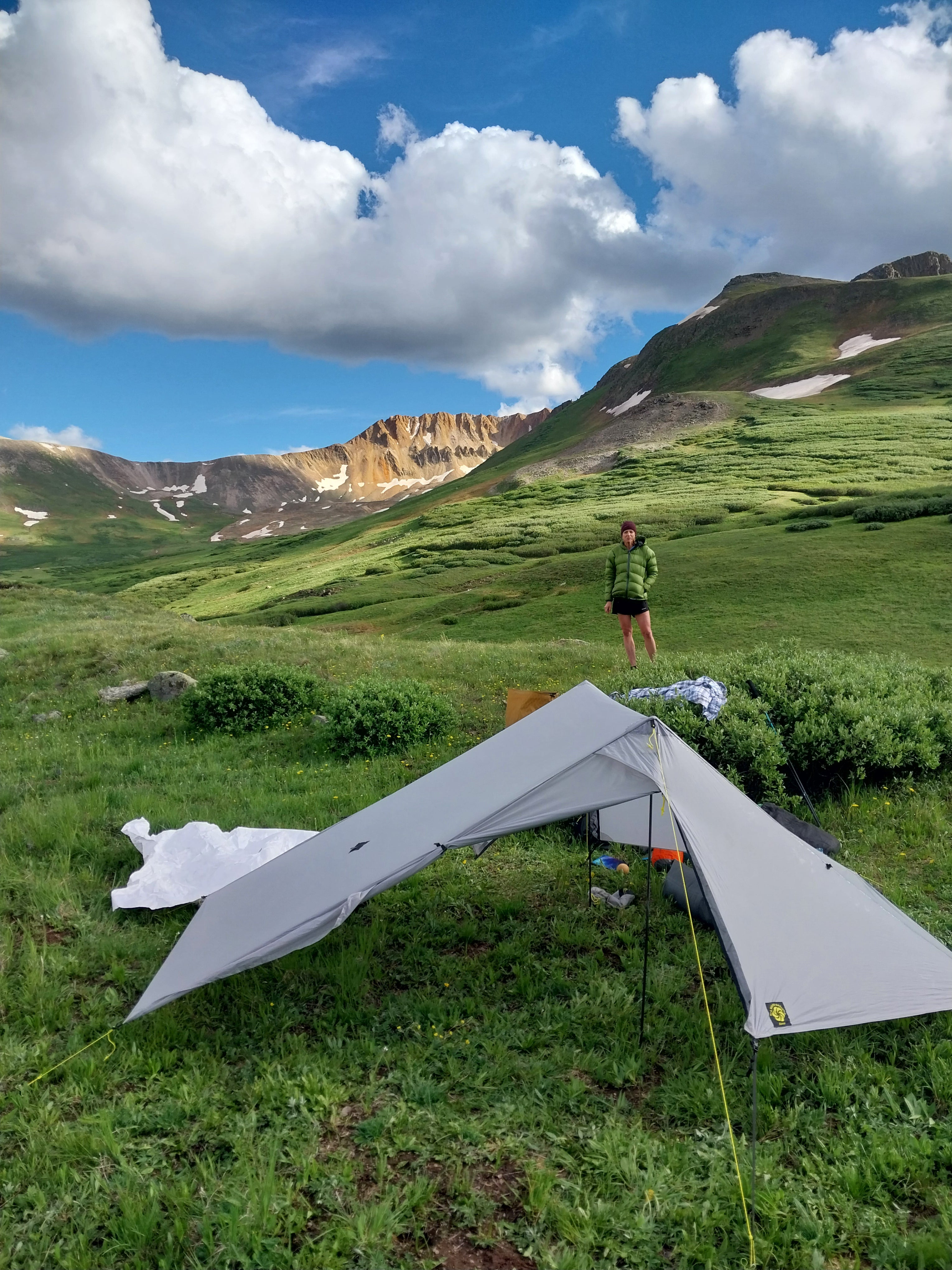Ultralight backpacking gear walks a fine line between weight and durability. That being said, ultralight gear can also be durable with the right care. Regular zipper maintenance is crucial to the long-term durability of UL Zippers on both tents and backpacks.
Most UL zipper maintenance involves being aware of your zippers while they're in use on your trip or thru-hike. These simple tips, used both while hiking and after hiking, will extend the life of your UL zippers.
After 16 years of thru-hiking, I’ve made mistakes with UL zippers in the past. These tips are how I currently get UL zippers to last longer than they did before, which has helped my gear budget!
How to Make Your Ultralight Zippers Last
There are two types of care you need to do to keep your UL zippers in tip-top shape.
First, you need to be gentle with your UL zippers while you’re out backpacking. Obviously, in more dire conditions, like beating a thunderstorm over a ridge, you can be rough on your zippers. However, you need to aim to use your zippers gently otherwise.
Second, you need to clean your UL zippers after each thru-hike. This goes with your overall tent and backpack maintenance. However, if you hike regularly in dusty areas like the desert, you may need to rinse out your zippers in the cheap motel sink to help them out.
UL zippers are found in two main areas: your tent and your backpack. Some ultralight packing cubes or wallet bags also use them, but they experience less overall daily stress.

Ultralight Tent Zipper Care and Maintenance
UL tent zippers see a lot of overall stress, from the tautness of the setup to the wind, rain, and constant dust bombardment.
Here are my top tips for keeping your ultralight tent zippers smooth and functional:
- The best thing you can do to care for your UL tent zippers is to use both hands as much as possible when opening and closing your tent. While that’s not always possible, the more you use both hands, the less stress ends up on the zipper. You can especially see the difference when you use two hands on a taut tarp or around the curve of the bug net.
- When you want the tarp or bug net to stay open, roll it and hook it so the wind doesn’t whip it around. This moves the tension away from the zipper some.
- As you get in and out of the bug net, try not to smash the lower zipper into the dirt with your body or other gear. The dust, sand, and dirt will infiltrate your zippers enough as is, but it’s best not to add it directly.
If you notice your zipper starting to have trouble, don’t force it. Instead, try:
- While holding both unzipped sides in one hand, use the other to slowly back the zipper up. Once the UL zipper finds the track again, look closely at the zipper teeth. Is there something in there? If so, remove it.
- After the zipper has an issue, slowly zip it back together, listening and feeling for a catch. If there’s none, proceed.
- If the zipper catches more than once, rinse it under the tap at the motel or hostel sink in your next town. Sometimes, there’s something in the zipper pull or the zipper teeth that you can’t see.


Ultralight Backpack Pack Hip Belt Zipper Care and Maintenance
Like your tent zippers, your backpack has UL zippers on your hip belt. These are a common item to break throughout a thru-hike if proper care is not taken.
For most people who choose to hike with a hip belt, these will be some of the most frequently used pieces of your ultralight backpack.

Here are some tips to keep your UL zippers on your backpack happy and working!
- Don’t overstuff your hip belt pockets! Fill them, but don’t fill them so much that it pulls the zipper teeth taught while it’s closed.
- As much as you can, use two hands when reaching down to open them. If you’re reaching to your right hip belt pocket, use your left hand to pinch the area around the zipper opening and use your right hand to open the zipper. Even if you only do this half the time, it will help in the long run.
- When you set your backpack down on the ground, put it sitting upright. This keeps the zippers out of extra dirt. Also, avoid sitting on your backpack as much as possible.
Just like the tent zipper maintenance, if the zipper gets stuck, don’t force it. Take a look at it during your next break. You may need to rinse the zipper out in the sink at your next motel or hostel.
If one of your hip belt UL zippers breaks, you can often ask the company what type and size zipper pull that backpack uses. SMD has a zipper replacement guide here.

Wash Your Tent and Backpack at the end of Hiking Season
Long-term UL zipper maintenance also relies on you washing your tent and backpack after a thru-hike.
This should be a once-per-year process. Clean your gear before you store your backpacking gear, and get out your skis!
The process for washing your tent and backpack is similar but slightly different. For your tent, you’ll want Nikwax Tech Wash and Nikwax TX Direct. For your backpack, you’ll want those plus some unscented OxiClean to really get the smell out of your shoulder straps.
As you wash, make sure to agitate the cleaning liquids through your UL zippers to remove any sand, dirt, or general trail grit.
Packing Pods and Camera Case UL Zippers

Often, you’ll also see UL zippers used on packing cubes and camera front packs as well.
Your packing pods will see less overall stress than your tent or backpack. However, you should use similar techniques to keep them happy.
First, don’t overstuff your packing cubes. You can see the stress on the zipper when it’s jam-packed versus comfortably full.
Second, use both hands to unzip your packing pod, especially around the curves.
If you have a camera front pack or any other zippered area on your shoulder straps, guide the zippers around the curves.
One UL zipper area where we have not experienced as much zipper stress is our flight harness zippers. Because these shoulder strap zippers go straight up and down, they don’t have as much environmental stress or curve stress. However, they do deserve a good wash after your thru-hike!
Final Thoughts
While UL zippers are more delicate than regular zippers, they also see a lot more hardcore use. They help you escape the wind, rain, sleet, and sometimes hail or snow.
The rougher you treat your UL zippers out on the trail, the less time they will last.
If you treat them well most of the time, they can withstand those “oh snap” moments when you can’t because you’re outrunning a storm.











Leave a comment
This site is protected by hCaptcha and the hCaptcha Privacy Policy and Terms of Service apply.